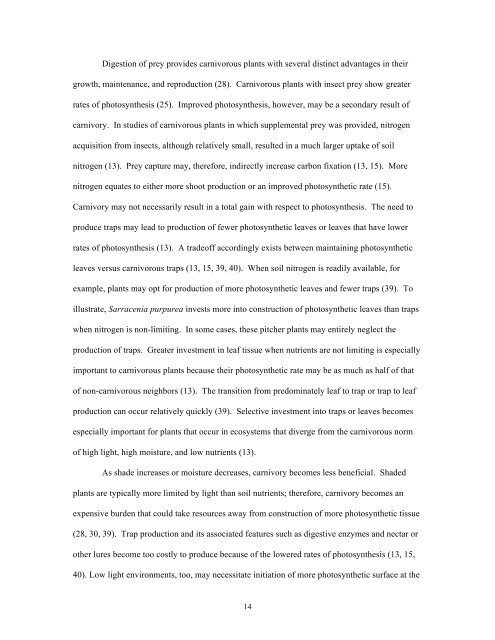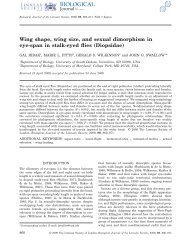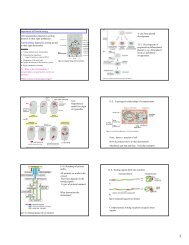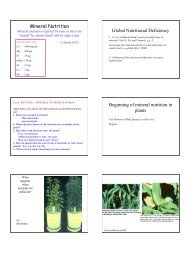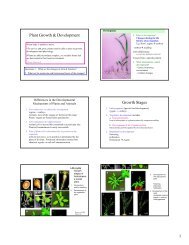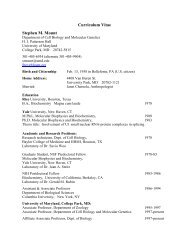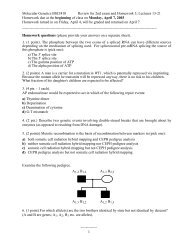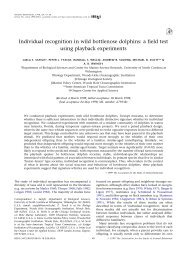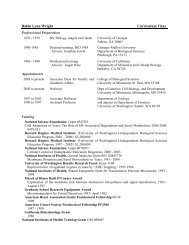Carnivorous Plants and Their Prey
Carnivorous Plants and Their Prey
Carnivorous Plants and Their Prey
Create successful ePaper yourself
Turn your PDF publications into a flip-book with our unique Google optimized e-Paper software.
Digestion of prey provides carnivorous plants with several distinct advantages in their<br />
growth, maintenance, <strong>and</strong> reproduction (28). <strong>Carnivorous</strong> plants with insect prey show greater<br />
rates of photosynthesis (25). Improved photosynthesis, however, may be a secondary result of<br />
carnivory. In studies of carnivorous plants in which supplemental prey was provided, nitrogen<br />
acquisition from insects, although relatively small, resulted in a much larger uptake of soil<br />
nitrogen (13). <strong>Prey</strong> capture may, therefore, indirectly increase carbon fixation (13, 15). More<br />
nitrogen equates to either more shoot production or an improved photosynthetic rate (15).<br />
Carnivory may not necessarily result in a total gain with respect to photosynthesis. The need to<br />
produce traps may lead to production of fewer photosynthetic leaves or leaves that have lower<br />
rates of photosynthesis (13). A tradeoff accordingly exists between maintaining photosynthetic<br />
leaves versus carnivorous traps (13, 15, 39, 40). When soil nitrogen is readily available, for<br />
example, plants may opt for production of more photosynthetic leaves <strong>and</strong> fewer traps (39). To<br />
illustrate, Sarracenia purpurea invests more into construction of photosynthetic leaves than traps<br />
when nitrogen is non-limiting. In some cases, these pitcher plants may entirely neglect the<br />
production of traps. Greater investment in leaf tissue when nutrients are not limiting is especially<br />
important to carnivorous plants because their photosynthetic rate may be as much as half of that<br />
of non-carnivorous neighbors (13). The transition from predominately leaf to trap or trap to leaf<br />
production can occur relatively quickly (39). Selective investment into traps or leaves becomes<br />
especially important for plants that occur in ecosystems that diverge from the carnivorous norm<br />
of high light, high moisture, <strong>and</strong> low nutrients (13).<br />
As shade increases or moisture decreases, carnivory becomes less beneficial. Shaded<br />
plants are typically more limited by light than soil nutrients; therefore, carnivory becomes an<br />
expensive burden that could take resources away from construction of more photosynthetic tissue<br />
(28, 30, 39). Trap production <strong>and</strong> its associated features such as digestive enzymes <strong>and</strong> nectar or<br />
other lures become too costly to produce because of the lowered rates of photosynthesis (13, 15,<br />
40). Low light environments, too, may necessitate initiation of more photosynthetic surface at the<br />
14


